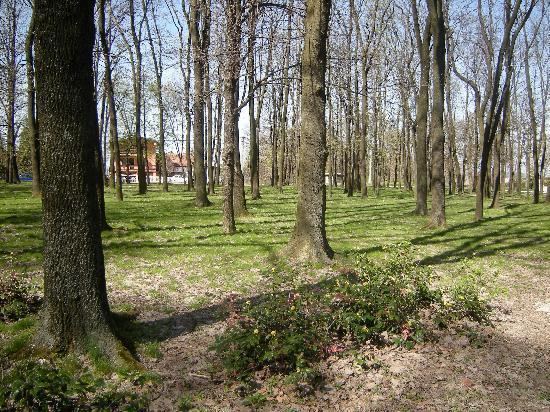Country Serbia Population 57,179 (2010) Area 854 km2 | District Rasina Mayor Bratislav Gasic | |
Krusevac (Serbian Cyrillic: ) is a city and the administrative center of the Rasina District, in Serbia. According to the 2011 census, the administrative area has a population of 128,752, while the town has 58,745.
Contents
- Map of Krusevac
- Hotel novi palas krusevac serbia
- Grobari krusevac 17 03 2012
- History
- Soul food serbia
- References
Map of Krusevac
The city was founded in 1371, by Prince Lazar of Serbia (1371–1389), who used it as his seat.
Hotel novi palas krusevac serbia
Grobari krusevac 17 03 2012
History

The etymology is derived from the Serbian word for "river stone", krusac which was largely used for a building at that time.

Krusevac was founded in 1371, as a fortified town in the possession of Lord Lazar Hrebeljanovic. The Lazarica Church (or Church of St. Stephen [Nemanja]) was built by Lazar between 1375–1378, in the Morava architectural style, in the village of . It is mentioned in one of Lazars edicts in 1387, as his seat, when he affirmed the rights of Venetian merchants on Serbian territory. In preparation for the Battle of Kosovo (1389) against the Ottoman Empire, the Serbian army assembled in the city. The site of Lazars palace is marked by a ruined enclosure containing a fragment of the tower of his spouse Princess Milica, and, according to legend, tidings of the defeat were brought to her by crows from the battlefield. After the battle, the city was held by Princess Milica as her seat. The little that remains of Lazars city is the Krusevac Fortress, which was declared a Cultural Monument of Exceptional Importance in 1979. Several old Ottoman houses were left at the beginning of the 20th century, besides an old Turkish fountain and bath, which was known as Alacahisar (Aladza Hisar) during Ottoman rule between 1427-1833 (nominally to 1867) when Krusevac was the seat of the Sanjak of Krusevac. The Ottoman rule was interrupted during Austrian occupations between 1688–1690 and 1717-1739.
A large monument dedicated to the fallen Serbs at the Battle of Kosovo was sculpted by Petar Ubakovic (1852–1910). A part of the monument is also a statue of the famous blind Serbian poet and guslar Filip Visnjic.
From 1929 to 1941, Krusevac was part of the Morava Banovina of the Kingdom of Yugoslavia.
